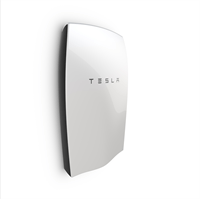The key to the proposed $2.86 billion takeover is combining Tesla's electric cars and wall-mounted battery units with SolarCity's rooftop panels, letting homeowners store solar power to use at night.
Here's the catch: Creating this end-to-end energy company would negate the main financial incentive for rooftop panels.
Utilities let consumers sell power into the grid at rates generous enough to cover most or all of their utility bills. That benefit, known as net metering, loses its value when electricity is instead squirreled away in a Tesla battery.
Musk has said the combination will make economic sense within five years.
"The value proposition for solar plus storage is at odds with net metering,'' said Ravi Manghani, director of energy storage at GTM Research.
Tesla announced the friendly offer to acquire SolarCity June 21, and the solar company's board is considering the deal.
The two companies are closely linked, and Musk is their top shareholder, holding more than 20% of the shares in both.
He's planning to disclose the "Top Secret Tesla Masterplan Part 2," possibly this week, according to a July 10 Tweet.
Evolving Landscape
Pairing solar with storage already makes economic sense in a handful of places, such as Hawaii, where energy costs are high and a proliferation of rooftop panels has overloaded the grid with solar power. As solar continues to grow and Tesla finds ways to cut the cost of its lithium-ion Powerwall batteries, the economics will pan out elsewhere, Musk said during a June 22 call with analysts.
"It's going to make sense for many parts of Europe and many parts of United States," Musk said during the call. "Over time, it's going to make sense for everywhere."
Time of Use
The primary motivation for solar customers to install batteries now is for backup power during a blackout, said Matt Roberts, executive director of the Energy Storage Association, a Washington-based industry group. But with a 6.4-kilowatt-hour Powerwall going for $3,000, demand for solar-storage has been limited. At the end of 2015, only about one in 400 grid-connected solar customers also had storage, according to GTM Research.
Tesla Powerwall is a rechargeable lithium-ion battery designed to store energy at a residential level for load shifting, backup power and self-consumption of solar power generation. Read more about the technology here.
Musk is betting the regulatory landscape will evolve. States established net metering programs as early as the 1980s to encourage people to install rooftop panels. Now that more than one million U.S. homes have solar -- and as utilities bemoan the policy that required them to buy the electricity -- more than a dozen states are considering changes to the policy, or phasing it out altogether.
At same time, a move is underway to change the way homeowners pay for power. Residential customers typically pay the same price for a kilowatt-hour of electricity, whether its high noon or the dead of night. That ignores the fact that solar panels produce more power in the daytime, when most people are at work, than in the evening when the masses arrive home and switch on their lights.
That's why utilities are increasingly offering "time-of-use" rates that make power cheaper when demand is low and more expensive during peak periods.
'Company of Tomorrow'
If utilities are no longer mandated to buy rooftop solar power -- or if power becomes more expensive during evening peak hours -- then pairing solar panels with storage may be a boon for homeowners. They could generate extra power during the day while prices are low, then use it up at night when prices climb. Musk is betting that will create opportunities for a Tesla-SolarCity merger.
"They are building the energy company of tomorrow," said Roberts, of the Energy Storage Association.
Tomorrow may be years away. By 2021, GTM expects about 6% of solar homes on the grid to have storage systems.
Smart Meters
Change comes slowly in the electricity business. While utilities have begun using time-of-use rates in Southern California, Arizona and a handful of other places, widespread adoption will require millions of customers to install so-called smart meters that can track the hourly ebbs and flows of usage. SolarCity and California's biggest utility, Pacific Gas & Electric, announced Tuesday a test program involving residential batteries and smart power-management technology, starting in September in San Jose, California.
In theory, combining solar panels and batteries would make homes fully self sufficient, allowing them to unplug from the grid and kiss utility bills goodbye. However, Powerwalls don't provide enough capacity yet to make that affordable. An off-the-grid homeowner would need several of them to stockpile days' worth of power to make it through cloudy days and long winter nights.
Net metering, meanwhile, is hardly on the brink of extinction. While at least 17 states are considering curtailing or phasing out the subsidy, few have indicated they will retire it entirely.
Even if states were to end net metering, it wouldn't necessarily spur demand for energy-storage, said Yayoi Sekine, a Bloomberg New Energy Finance analyst. Solar companies regularly install over-sized systems that exceed their customers' energy needs, allowing homeowners to maximize their net metering payments, Sekine said. If net metering went away, the first impact might be installers just reducing the size of the systems.
Pairing solar panels with storage systems will probably make economic sense, eventually, as regulatory policies evolve, Sekine said.
"We just don't know when," she said.











